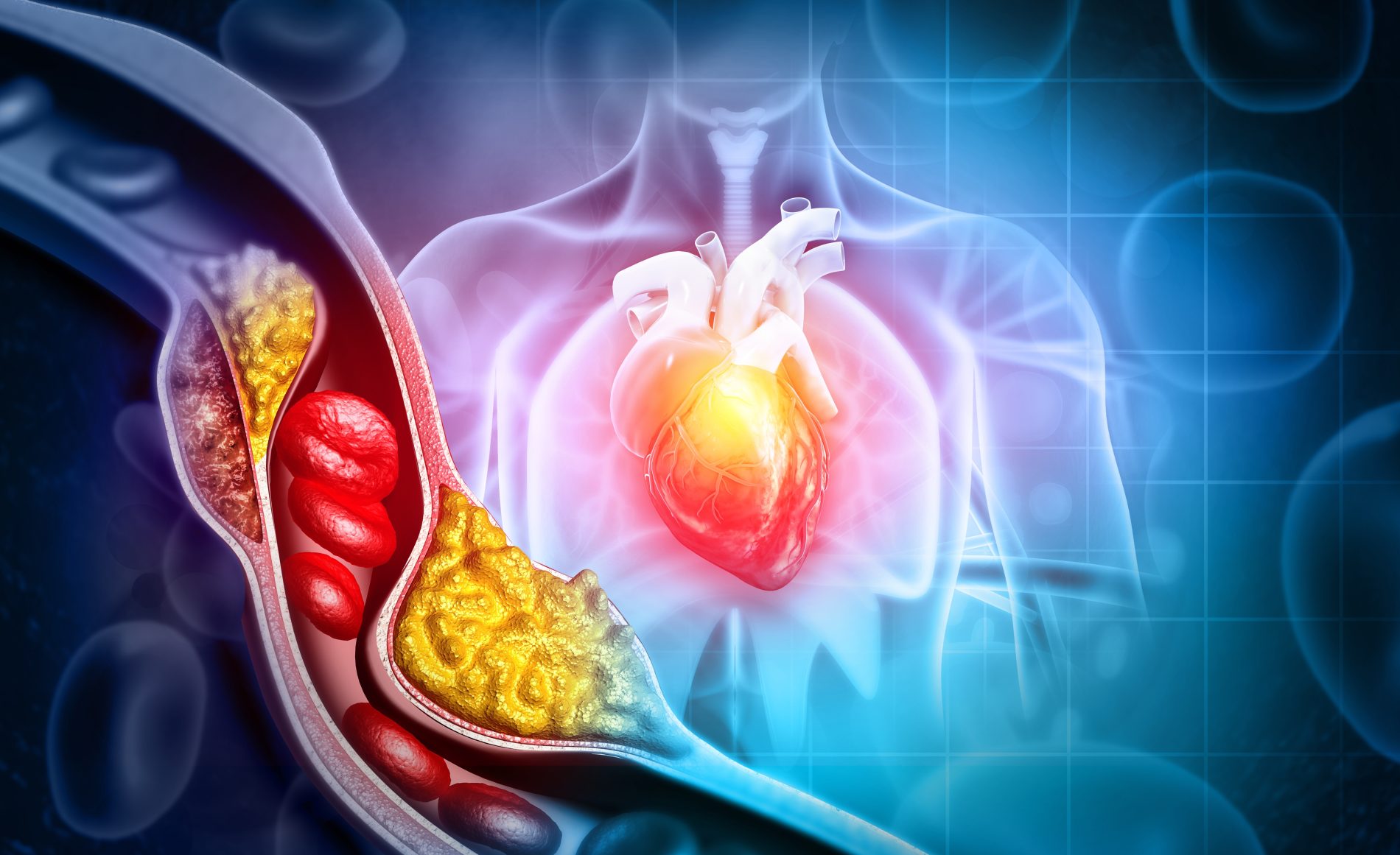
Cracking Down on Cholesterol
Cholesterol is a waxy, fat-like substance that your liver creates. Your body needs some cholesterol to make hormones, vitamin D and other substances that help you digest foods, but like everything else, having too much cholesterol is bad.
High cholesterol can combine with other substances in the blood to form plaque buildup. This can cause heart disease and stroke—often with no warning—which is why it’s so important to get your cholesterol levels checked.1
Cholesterol can also be confusing. What do “good” cholesterol and “bad” cholesterol mean, and where should your levels be for each? Below is a breakdown of it all:
- LDL cholesterol (low-density lipoprotein)—also known as “bad” cholesterol: LDL cholesterol causes plaque buildup and having high levels of LDL cholesterol raises your risk for heart disease and stroke. About 100 mg/dL is considered optimal.
- HDL cholesterol (high-density lipoprotein)—also known as “good” cholesterol: HDL cholesterol absorbs cholesterol and carries it back to the liver. For men, it’s best to have greater than or equal to 40 mg/dL; for women, it’s best to have greater than or equal to 50 mg/dL.
- Total cholesterol: About 150 mg/dL is considered good.
- Triglycerides: A type of fat in the blood. Optimal levels are typically less than 150 mg/dL.
Taking Steps to Manage Your Cholesterol
1. Get tested.
- An average healthy adult should be tested once every five years.
- People who have heart disease, diabetes or a family history of high cholesterol need to get their cholesterol checked more often.4
- Children and adolescents should have their cholesterol checked at least once between ages 9 and 11 and again between ages 17 and 21.3
Learn more about cholesterol screenings here.
2. Make healthy food choices.
- Limit foods that are high in saturated fats. Examples include cheese, fatty meats, dairy desserts, and tropical oils (such as palm oil).
- Consume foods that are low in saturated fat, trans fat, sodium and added sugars. These foods include lean meats, seafood, fat-free/low-fat milk, cheese, yogurt, whole grains, fruits and vegetables.
- Eat foods that are naturally high in fiber such as oatmeal and beans; and foods with unsaturated fats such as avocado, vegetable oils and nuts.
3. Get Regular Exercise and Physical Activity.
- For adults, the Surgeon General recommends 2 hours and 30 minutes per week of moderate-intensity exercise, such as brisk walking or bicycling.
- For children and adolescents, 1 hour per day of vigorous physical activity is recommended.
- There are little things you can do throughout your day to stay active outside of a full workout: Take the stairs instead of the elevator, park a little farther away, walk or bike to work, or do jumping jacks during commercial breaks.
Learn more about how you can increase your physical activity based on your age group.
4. Do not smoke or use tobacco products. Smoking greatly increases your risk for heart disease by damaging your blood vessels and hardening your arteries. Quitting smoking will lower your risk. Learn more about tobacco use and ways to quit at the CDC’s smoking and tobacco use website.
5. Talk with your healthcare provider. They can facilitate testing and help you set up a plan for treating high cholesterol. Always ask questions if you don’t understand something. If you are prescribed medications to manage your cholesterol, take them as they are prescribed. Learn more about medicines to lower cholesterol.
6. Know your family history. High cholesterol can be hereditary. You may have a condition called familial hypercholesterolemia (FH). You should be tested more often if you have a parent or immediate family member with high cholesterol.
Debunking Common Cholesterol Myths
Myth #1: A person will have signs and symptoms of high cholesterol.
This is false. High cholesterol usually has no warning signs or symptoms until it’s too late—when you have a heart attack or stroke. That’s why it’s so important to stay proactive and get your cholesterol levels checked.
Myth #2: Cholesterol can always be managed with diet and exercise alone.
This is also false. Eating healthy and regularly exercising are always good habits, but they cannot always cure high cholesterol alone. Some people also need medication to manage their cholesterol levels, especially those in the following groups:
- People with familial hypercholesterolemia (FH): FH is a genetic condition that causes very high LDL “bad” cholesterol levels beginning at a young age. Diet and exercise can’t change your genetics.
- People with cardiovascular disease (CVD). People with CVD may already have narrowed arteries because of too much plaque. Medicines that lower cholesterol can help reduce the risk for heart attack or stroke.
- People with diabetes. Type 2 diabetes lowers HDL “good” cholesterol levels, and raises LDL “bad” cholesterol levels. This combination raises your risk of heart disease and stroke.
Always talk to your health care provider to find out what medications may be a good fit for your cholesterol management.
SVH is Here to Help
The providers at St. Vincent Family Health Center can facilitate your cholesterol test and guide you in making necessary lifestyle changes. Call us today to schedule an appointment 719-486-0230.
For more information, visit the CDC’s webpage on cholesterol.
References
- MedlinePlus.gov. Bethesda (MD): National Library of Medicine (US); Cholesterol; updated 2020 Dec 10; Available from: https://medlineplus.gov/cholesterol.html
- National Heart, Lung, and Blood Institute. Third Report of the National Cholesterol Education Program (NCEP) Expert Panel on Detection, Evaluation, and Treatment of High Blood Cholesterol in Adults (Adult Treatment Panel III) Final Reportexternal icon. NIH Pub. No. 02-5215. Bethesda, MD: National Heart, Lung, and Blood Institute; 2002.
- Grundy SM, Stone NJ, Bailey AL, Beam C, Birtcher KK, Blumenthal RS, et al. 2018 AHA/ACC/AACVPR/AAPA/ABC/ACPM/ADA/AGS/APhA/ASPC/NLA/PCNA Guideline on the Management of Blood Cholesterol: a report of the American College of Cardiology/American Heart Association Task Force on Clinical Practice Guidelinesexternal icon. Circulation. 2019;139(25):e1082–e1143.
- HealthFinder.gov. Get Your Cholesterol Checked. Washington, DC: U.S. Department of Health and Human Services; 2018.

